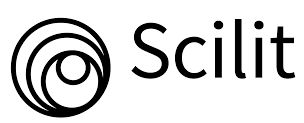Вплив температури зимівлі на стан антиоксидантої системи Apis mellifera L.
В. В. Караван, Д. Ю. Качмарик, В. Ф. Череватов, Л. С. Язловицька
Ця електронна адреса захищена від спам-ботів. Вам необхідно увімкнути JavaScript, щоб побачити її.
Чернівецький національний університет імені Юрія Федьковича,
вул. Коцюбинського, 2, м. Чернівці, 58012, Україна
Досліджено стан антиоксидантної системи захисту медоносних бджіл Apis mellifera carnica за дії різних температур для оптимізації температурного режиму утримання бджолиних колоній у приміщенні під час зимівлі. Колонії бджіл (вік особин — 81–91 день) переносили з території пасіки Чернівецького національного університету у період різких перепадів температури (кінець листопада) у сталі температурні умови приміщень 5±0,6°С та 14±0,8°С й утримували їх там протягом 12 тижнів. Робочих бджіл для біохімічного аналізу відбирали кожні два тижні 7 разів. Вивчено вміст ТБК-активних продуктів (ТБКАП), активність каталази (САТ) та глутатіон-S-трансферази (GST) у тагмах комах (голова, груди та черевце). Встановлено, що переведення бджолиних колоній з нестабільних температурних умов на сталі, незалежно від їхньої величини, призводить до зменшення інтенсивності перекисного окиснення ліпідів (рівня ТБКАП) на тлі зростання активності ензимів (CAT та GST). Виявлена тагмоспецифічна відповідь антиоксидантної системи організму бджіл залежно від температури зимівлі. Утримання бджолосімей у приміщенні за сталих температур впродовж 10 тижнів супроводжувалось взаємоузгодженістю в роботі антиоксидантної системи організму комах: вміст ТБКАП, як і активність ензимів, залишались на сталому рівні впродовж досліду. Проте на початку лютого (наприкінці досліду), незалежно від температури в приміщенні, у тканинах голови бджіл зростав вміст ТБКАП, а в тканинах черевця посилювалась активність GST. Водночас в середині зими (січень) рівень ТБКАП у бджіл, які утримувались за t = +5°С, був меншим порівняно з бджолами, які зимували за t = +14°С. Запропоновано оптимальний температурний режим утримання колоній бджіл в умовах зимівлі у закритих приміщеннях: для бджолиних колоній середньої сили — за температури близько +5°С, а бджолиних колоній слабкої сили та нуклеусів — за температури близько +14°С до кінця січня з подальшим зниженням температури до +10°С.
Ключові слова: Apis mеllifera, зимівник, температура, каталаза, глутатіон-S-трансфераза, ТБК-активні продукти
-
Abou-Shaara HF, Owayss AA,. Ibrahim YY, Basuny NK. A review of impacts of temperature and relative humidity on various activities of honey bees. Insectes Sociaux. 2017; 64 (4): 455–463. DOI: 10.1007/s00040-017-0573-8.
-
Aebi H. Catalase in vitro. Methods Enzymol. 1984; 105: 121–126. DOI: 10.1016/S0076-6879(84)05016-3.
-
Anderson KE, Ricigliano VA. Honey bee gut dysbiosis: a novel context of disease ecology. Opinion Insect Sci. 2017; 22: 125–132. DOI: 10.1016/j.cois.2017.05.020.
-
Aurori CM, Buttstedt A, Dezmirean DS, Mărghitaş LA, Moritz RFA, Erler S. What is the main driver of ageing in long-lived winter honeybees: antioxidant enzymes, innate immunity, or vitellogenin? Gerontol. A. 2014; 69 (6): 633–639. DOI: 10.1093/gerona/glt134.
-
Badiou-Bénéteau A, Carvalho SM, Brunet JL, Carvalho GA, Buleté A, Giroud B, Belzunces LP. Development of biomarkers of exposure to xenobiotics in the honey bee Apis mellifera: application to the systemic insecticide thiamethoxam. Environ. Saf. 2012; 82: 22–31. DOI: 10.1016/j.ecoenv.2012.05.005.
-
Bradford MM. A rapid and sensitive method for the quantification of microgram quantities of protein utilizing the principle of protein-dye binding. Biochem. 1976; 72 (1–2): 248–254. DOI: 10.1016/0003-2697(76)90527-3.
-
Cervoni MS, Cardoso-Júnior CAM, Craveiro G, Souza AO, Alberici LC, Hartfelder K. Mitochondrial capacity, oxidative damage and hypoxia gene expression are associated with age-related division of labor in honey bee (Apis mellifera) workers. J. Exp. Biol. 2017; 220 (21): 4035–4046. DOI: 10.1242/jeb.161844.
-
Corona M, Robinson GE. Genes of the antioxidant system of the honey bee: annotation and phylogeny. Insect Mol. Biol. 2006; 15 (5): 687–701. DOI: 10.1111/j.1365-2583.2006.00695.x.
-
Di Pasquale G, Salignon M, Le Conte Y, Belzunces LP, Decourtye A, Kretzschmar A, Suchail S, Brunet JL, Alaux C. Influence of pollen nutrition on honey bee health: Do pollen quality and diversity matter? PLoS One. 2013; 8 (8): e72016. DOI: 10.1371/journal.pone.0072016.
-
Döke MA, Frazier M, Grozinger CM. Overwintering honey bees: biology and management. Opin. Insect Sci. 2015; 10: 185–193. DOI: 10.1016/j.cois.2015.05.014.
-
Fedoriak MM, Tymochko LI, Kulmanov OM, Volkov RA, Rudenko SS. Winter loses of honey bee (Apis mellifera) colonies in Ukraine (monitoring results of 2015–2016). Ukr. J. Ecol. 2017; 7 (4): 604–613. DOI: 10.15421/2017_167.
-
Fedoriak MM, Tymochko LI, Kulmanov OM, Shkrobanets OO, Zhuk AV, Dron YS, Deli OF, Podobivskiy SS, Melnychenko GM, Leheta UV, Kholivchuk AM. Results of annual honey bee colony losses survey in Ukraine: winter 2017–2018. Sys. 2019; 11 (1): 60–70. DOI: 10.31861/biosystems2019.01.060. (in Ukrainian)
-
Grotto D, Santa Maria L, Valentini J, Paniz C, Schmitt G, Garcia SC, Pomblum VJ, Rocha JBT, Farina M. Importance of the lipid peroxidation biomarkers and methodological aspects for malondialdehyde quantification. Quim. Nova. 2009; 32 (1): 169–174. DOI: 10.1590/S0100-40422009000100032.
-
Hatjina F, Costa C, Büchler R, Uzunov A, Drazic M, Filipi J, Charistos L, Ruottinen L, Andonov S, Meixner MD, Bienkowska M, Dariusz G, Panasiuk B, Le Conte Y, Wilde J, Berg S, Bouga M, Dyrba W, Kiprijanovska H, Korpela S, Kryger P, Lodesani M, Pechhacker H, Petrov P, Kezic N. Population dynamics of European honey bee genotypes under different environmental conditions. Apicult. Res. 2014; 53 (2): 233–247. DOI: 10.3896/IBRA.1.53.2.05.
-
Helmer SH, Kerbaol A, Aras P, Jumarie C, Boily M. Effects of realistic doses of atrazine, metolachlor, and glyphosate on lipid peroxidation and diet-derived antioxidants in caged honey bees (Apis mellifera). Sci. Pollut. Res. 2015; 22 (11): 8010–8021. DOI: 10.1007/s11356-014-2879-7.
-
Hroncova Z, Havlik J, Killer J, Doskocil I, Tyl J, Kamler M, Titera D, Hakl J, Mrazek J, Bunesova V, Rada V. Variation in honey bee gut microbial diversity affected by ontogenetic stage, age and geographic location. PLoS ONE. 2015; 10 (3): e0118707. DOI: 10.1371/journal.pone.0118707.
-
Huey RB, Berrigan D. Temperature, demography, and ectotherm fitness. Nat. 2001; 158 (2): 204–210. DOI: 10.1086/321314.
-
Karavan VV, Tsaruk VI, Cherevatov VF, Yazlovytska LS. The glutathione-S-transferase activity of Apis mellifera upon summer feeding with varying carbohydrates diets. Sci. Herald Chernivtsy Univ. Biol. Sys. 2018; 10 (1): 20–28. DOI: 10.31861/biosystems2018.01.020. (in Ukrainian)
-
Komissar AD. High-temperature wintering of honey bees. Kyiv, NPP Laboratory of Biotechnology, Schmalhausen Institute of Zoology, Academy of Sciences of Ukraine, 1994: 166 p. (in Ukrainian)
-
Komissar A. Thermoregulation of honey bees in winter by means of vertical movement in the hives with vertical gradient of temperature. Proceedings of the 3rd European Congress on Social Insects, Saint Petersburg, 2005: 78.
-
Kunc M, Dobeš P, Hurychová J, Vojtek L, Poiani SB, Danihlík J, Havlík J, Titěra D, Hyršl P. The year of the honey bee (Apis mellifera) with respect to its physiology and immunity: A search for biochemical markers of longevity. Insects. 2019; 10 (8): 244. DOI: 10.3390/insects10080244.
-
Li G, Zhao H, Liu Z, Wang H, Xu B, Guo X. The wisdom of honeybee defenses against environmental stresses. Microbiol. 2018; 9: 722. DOI: 10.3389/fmicb.2018.00722.
-
Münch D, Amdam GV. The curious case of aging plasticity in honey bees. FEBS Letters. 2010; 584 (12): 2496–2503. DOI: 10.1016/j.febslet.2010.04.007.
-
Nikolenko AG, Saltykova ES, Gaifullina LR. Molecular mechanisms of antioxidant protective processes in honeybee Apis mellifera. In: Farooqui T. Oxidative stress in vertebrates and invertebrates: molecular aspects on cell signaling. Ed. by T. Farooqui, A. A. Farooqui. New Jersey; John Wiley & Sons. 2012 (20); 279–294. DOI: 10.1002/9781118148143.ch20.
-
Nürnberger F, Härtel S, Steffan-Dewenter I. The influence of temperature and photoperiod on the timing of brood onset in hibernating honey bee colonies. Peer J. 2018; 6: e4801. DOI: 10.7717/peerj.4801.
-
Papandopoulos AI, Polemitou I, Laifi P, Yiango A, Tananaki C. Glutatione S-transferase in the insect Apis mellifera macedonica: Kinetic characteristic and effect of stress on the expression of GST isoenzymes in the adult worker bee. Biochem. Physiol. C. Toxicol. Pharmacol. 2004; 139 (1–3): 93–97. DOI: 10.1016/S1532-0456(04)00180-2.
-
Placer ZA, Cushman LL, Johnson BC. Estimation of product of lipid peroxidation (malonyl dialdehyde) in biochemical systems. Biochem. 1966; 16 (2): 359–364. DOI: 10.1016/0003-2697(66)90167-9.
-
Polishchuk VP, Gaidar VA. Apiary. Kyiv, Perfect Style Ltd., 2008: 258 p. (in Ukrainian)
-
Ruttner F. Biogeography and taxonomy of honeybees. Springer-Verlag, Berlin, Heidelberg and New York 1988: 291 p. DOI: 10.1007/978-3-642-72649-1.
-
Seeley TD, Visscher PK. Survival of honeybees in cold climates: the critical timing of colony growth and reproduction. Entomol. 1985; 10 (1): 81–88. DOI: 10.1111/j.1365-2311.1985.tb00537.x.
-
Southwick EE. Allometric relations, metabolism and heart conductance in clusters of honey bees at cool temperatures. Comp. Physiol. B. 1985; 156: 143–149. DOI: 10.1007/BF00692937.
-
Stabentheiner A, Kovac H, Brodschneider R. Honeybee colony thermoregulation — regulatory mechanisms and contribution of individuals in dependence on age, location and thermal stress. PLoS ONE. 2010; 5 (1): e8967. DOI: 10.1371/journal.pone.0008967.
-
Stabentheiner A, Pressl H, Papst T, Hrassnigg N, Crailsheim K. Endothermic heat production in honeybee winter clusters. Exp. Biol. 2003; 206 (2): 353–358. DOI: 10.1242/jeb.00082.
-
Stalidzans E, Markovics Z, Krauze A, Bilinskis V, Berzonis A. Modeling of bee wintering building profitability. Apicult. Sci. 2007; 51 (2): 39–45. Available at: http://www.jas.org.pl:81/pdf/128?filename=jas_51_2_2007_5.pdf
-
Stalidzans E, Zacepins A, Kviesis A, Brusbardis V, Meitalovs J, Paura L, Bulipopa N, Liepniece M. Dynamics of weight change and temperature of Apis mellifera (Hymenoptera: Apidae) colonies in a wintering building with controlled temperature. Econom. Entomol. 2017; 110 (1): 13–23. DOI: 10.1093/jee/tow282.
-
Switanek M. Crailsheim K, Truhetz H, Brodschneider R. Modelling seasonal effects of temperature and precipitation on honey bee winter mortality in a temperate climate. Total Environ. 2017; 579: 1581–1587. DOI: 10.1016/j.scitotenv.2016.11.178.
-
Trapp J, McAfee A. Foster LJ. Genomics, transcriptomics and proteomics: enabling insights into social evolution and disease challenges for managed and wild bees. Ecol. 2017; 26 (3): 718–739. DOI: 10.1111/mec.13986.
-
Wallberg A, Han F, Wellhagen G, Dahle B, Kawata M, Haddad N, Simões ZLP, Allsopp MH, Kandemir I, de la Rúa P, Pirk CW, Webster MT. A worldwide survey of genome sequence variation provides insight into the evolutionary history of the honeybee Apis mellifera. Nature Genet. 2014; 46: 1081–1088. DOI: 10.1038/ng.3077.
-
Wang K, Liu ZG, Pang Q, Zhang WW, Chen XM, Fan RL, Yin L, Ji T. Investigating the regulation of hypopharyngeal gland activity in honeybees (Apis mellifera carnica) under overwintering conditions via morphologic analysis combined with iTRAQ-based comparative proteomics. Ann. Entomol. Soc. Amer. 2018; 111 (3): 127–135. DOI: 10.1093/aesa/say012.
-
Weather archive in Chernivtsi. Ukrainian Hydrometeorological Center: Information server. Available at: https://meteo.gov.ua/en//33658
-
Winston ML. The biology of the honey bee. Harvard University Press, 1991: 294 p.
-
Yan H, Meng F, Jia H, Guo X, Xu B. The identification and oxidative stress response of a zeta class glutathione S-transferase (GSTZ1) gene from Apis cerana cerana. Insect Physiol. 2012; 58 (6): 782–791. DOI: 10.1016/j.jinsphys.2012.02.003.
-
Yazlovitska LS, Kosovan MD, Cherevatov VF, Volkov RA. The catalase activity of Apis mellifera upon summer feeding with varying carbohydrate diet. Biol. Sys. 2016; 8 (2): 182–188. DOI: 10.31861/biosystems2016.02.182. (in Ukrainian)
-
Yeskov YK. The microclimate of the bee dwelling. Moscow, Rosselhozizdat, 1983: 192 p. (in Russian)
-
Zacepins A. Application of bee hive temperature measurements for recognition of bee colony state. AICT2012, Jelgava, 2012: 216–221.














